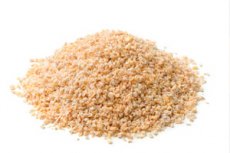New publications
A mixture of refined cornmeal and bran significantly lowers LDL-cholesterol levels
Last reviewed: 02.07.2025

All iLive content is medically reviewed or fact checked to ensure as much factual accuracy as possible.
We have strict sourcing guidelines and only link to reputable media sites, academic research institutions and, whenever possible, medically peer reviewed studies. Note that the numbers in parentheses ([1], [2], etc.) are clickable links to these studies.
If you feel that any of our content is inaccurate, out-of-date, or otherwise questionable, please select it and press Ctrl + Enter.

Results from a randomized, crossover clinical trial available online and to be published in an upcoming issue of the Journal of Nutrition show that simply replacing refined corn flour and corn bran-based foods can reduce LDL (low-density lipoprotein) cholesterol levels by 5% to 13.3% in just four weeks.
The study compared the effects of whole grain cornmeal, refined cornmeal, and a mixture (refined cornmeal plus corn bran). The results showed that 70% of participants experienced a significant reduction in LDL levels when consuming the mixture. For the other types of cornmeal, participants did not experience a reduction in LDL or total cholesterol, but they did not experience an increase either.
"People often think that dietary changes have to be big and large to really impact cardiovascular health and metabolic regulation. It's important to understand this: Corn is unique and underappreciated. The art and science of refining the kernels and fully utilizing the bran can lead to delicious foods that, in this case, also have a real impact on heart health," said Dr. Cory Wisner, lead researcher and associate professor in the Arizona State University College of Public Health.
Dr. Wisner noted that the team specifically focused the study on avoiding dramatic dietary changes in order to create a realistic intervention that could be easily integrated into a regular diet. The researchers provided study participants with baked goods to control the type and amount of corn flour, and the participants did not increase or decrease their grain intake during the study. These baked goods were developed by a master baker familiar with product formulation techniques and the special ingredients used in products commonly found in stores. Their goal was to demonstrate how practical it is to regularly include products made with corn bran-enriched flour in the diet to support heart health.
Surprisingly, the results showed no significant or consistent changes in gut microbiota diversity, consistent with the fact that study participants did not report digestive discomfort or changes during the interventions. Two genera, unclassified Lachnospiraceae and Agathobaculum, differed significantly between treatments, and although there was an increase in Agathobaculum (a common bacterium in the gut microbiota) in the whole grain corn flour phase, this change was not observed in the other two phases.
“The increase in Agathobaculum may be due to the greater diversity of polyphenols found in whole grain corn, which has the highest antioxidant capacity (compared to wheat, oats, and rice), but the study did not analyze this possibility,” Wisner said. “However, while the effects of whole grains on the microbiota vary from person to person, some universal things are known: fiber in whole grains can be fermented by microbes into butyrate, and both fiber and butyrate are often associated with gut health. These findings support this understanding.”
The 36 study participants were located in Phoenix, Arizona, and ranged in age from 18 to 67 years. They included a mix of women (~58%) and men, all had moderately elevated LDL levels, and none were taking cholesterol-lowering medications at the time of the study. During the study, participants alternated between each intervention for four weeks (with a minimum two-week washout period between interventions to return to baseline) to more evenly assess the impact of each intervention.
